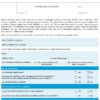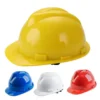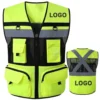“Essential OSHA Standards Every Safety Professional Must Know”
In today’s fast-paced work environments, ensuring employee safety is not just a legal requirement—it’s a business priority. Every safety professional must have a solid understanding of Essential OSHA Standards to prevent workplace hazards, minimize risks, and maintain compliance with federal regulations. From construction sites to corporate offices, OSHA standards provide the framework for creating a safe, productive, and healthy work environment.
Whether you’re managing chemical exposures, machinery, or emergency preparedness, mastering these standards allows you to protect employees, reduce incidents, and enhance overall organizational efficiency. With the right knowledge and tools, including HSE forms, presentations, and custom safety documents, professionals can confidently implement safety programs that meet regulatory requirements and foster a culture of workplace safety.
BrilliantSafeSol offers resources and tools to help safety professionals implement OSHA standards effectively.
1. The General Duty Clause
One of the most important OSHA rules is the General Duty Clause, which requires employers to:
Maintain a workplace free of recognized hazards.
Apply reasonable safety measures even if no specific OSHA regulation covers a situation.
Understanding this clause allows safety professionals to proactively identify hazards and prevent accidents. BrilliantSafeSol’s Custom HSE Documents can assist in documenting procedures that comply with this clause.
2. Hazard Communication Standard
The Hazard Communication Standard (HCS) ensures that employees are aware of chemical hazards in the workplace. It includes:
Clear labeling of hazardous substances.
Providing Safety Data Sheets (SDS) for every chemical.
Training employees on safe handling practices.
HSE Presentations from BrilliantSafeSol can simplify training by visually demonstrating chemical risks and proper safety protocols.
3. Personal Protective Equipment (PPE) Standards
PPE is essential to protect employees from unavoidable risks. OSHA standards include:
Assessing risks to determine appropriate PPE.
Providing well-maintained gear such as gloves, helmets, goggles, and protective clothing.
Training staff on correct usage and maintenance.
Using Custom HSE Documents and HSE Forms, safety professionals can track PPE issuance and ensure compliance with OSHA requirements.
4. Occupational Health Standards
OSHA outlines standards to maintain employee health, including:
Exposure limits for hazardous substances like dust and chemicals.
Medical monitoring programs for at-risk employees.
Ergonomic programs to prevent musculoskeletal disorders.
HSE Forms can record employee exposures, medical checks, and workplace assessments for compliance and reporting purposes.
5. Fall Protection Standards
Falls are a leading cause of workplace injuries. OSHA mandates:
Installing barriers, safety nets, or personal fall arrest systems.
Regular inspections of elevated work areas.
Training employees on safe practices at heights.
HSE Presentations help communicate fall risks and prevention methods clearly to employees.
6. Machine Safety Standards
To prevent injuries from machinery:
Install guards on moving parts.
Apply Lockout/Tagout procedures during maintenance.
Train employees on safe operation protocols.
BrilliantSafeSol’s Custom HSE Documents can outline machine safety procedures and emergency protocols.
7. Electrical Safety Standards
Electrical hazards are a serious risk. OSHA requires:
Safe installation and maintenance of electrical systems.
Use of Ground Fault Circuit Interrupters (GFCI) where needed.
Employee training on safe handling of electrical equipment.
HSE Forms can track inspections, incidents, and corrective actions to maintain compliance.
8. Emergency Preparedness and Fire Safety
OSHA emphasizes emergency readiness:
Conduct regular fire drills and evacuation training.
Install fire extinguishers and alarms.
Train employees in first aid and emergency response.
HSE Presentations and Custom HSE Documents from BrilliantSafeSol can standardize training content and emergency procedures across all departments.
9. Recordkeeping and Reporting
Documenting injuries and occupational illnesses is crucial:
Record incidents using OSHA logs.
Analyze data to identify recurring hazards.
Use records to improve safety programs.
BrilliantSafeSol offers ready-to-use HSE Forms for accurate recordkeeping and reporting.
10. Training and Continuous Improvement
Safety professionals must adopt a culture of continuous improvement:
Update training regularly to reflect the latest OSHA standards.
Conduct routine safety audits.
Encourage employees to report hazards and maintain a safety-first mindset.
HSE Presentations, Custom HSE Documents, and HSE Forms streamline ongoing training and compliance, making OSHA implementation easier and more efficient.
Conclusion: Safe Employees = Productive Employees
Understanding and applying essential OSHA standards is key to:
Reducing workplace accidents and illnesses.
Boosting employee morale and productivity.
Protecting your organization from legal and financial risks.
With BrilliantSafeSol, safety professionals can access HSE Presentations, Custom HSE Documents, and HSE Forms to implement OSHA standards effectively. Because a safe workplace is a productive workplace.
Don’t stop here! Unlock even more opportunities with our courses at Brilliant.





